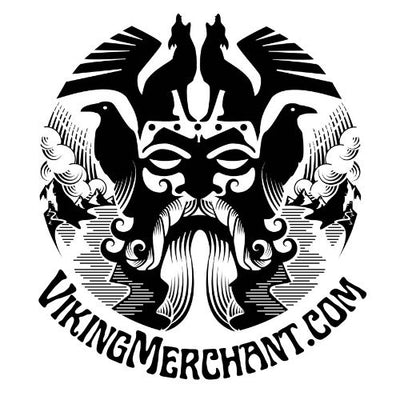Viking Yule vs. Christian Christmas: Similarities and Differences
Posted by Amber Lee on
The celebration of Yule by the Vikings and Christmas by Christians are two winter festivities that, on the surface, might seem worlds apart. However, dig a little deeper, and you'll find a fascinating blend of similarities and differences. Today, we're embarking on a journey through time, comparing these two revered winter traditions.

Similarities Between Yule and Christmas
-
Winter Solstice Celebration:
- Yule: The Vikings celebrated Yule around the time of the winter solstice, marking the longest night and the rebirth of the sun.
- Christmas: Although the exact date of Jesus' birth is unknown, December 25th was chosen to commemorate it, coinciding with existing winter solstice celebrations.
-
Festive Feasting:
- Yule: Yule was characterized by grand feasts, with families and communities coming together to share food and drink.
- Christmas: The Christmas dinner is a hallmark of the celebration, with families gathering around festive dishes, signifying unity and gratitude.
-
Symbolic Fire:
- Yule: The Vikings lit the Yule log, a massive piece of wood, believed to bring good luck and protection. It was burned continuously, sometimes for up to 12 days.
- Christmas: The Yule log tradition persisted in some Christian communities, representing the light of Christ and hope.
-
Gift-Giving:
- Yule: Gifts were exchanged during the Yule festivities, fostering bonds and strengthening community ties.
- Christmas: Gifting is central to modern Christmas celebrations, inspired by the Magi's gifts to baby Jesus and the spirit of generosity.
Differences Between Yule and Christmas
-
Origins & Purpose:
- Yule: The primary focus of Yule was to welcome the sun's return, ensuring fertility and a good harvest in the coming year.
- Christmas: Christmas is a Christian celebration commemorating the birth of Jesus Christ, the Son of God.
-
Duration:
- Yule: This Viking celebration could last up to 12 days, marking the end of the old year and the dawn of the new.
- Christmas: While the Twelve Days of Christmas exist, the primary celebration centers on December 24th-25th, with the period leading up to it being Advent.
-
Supernatural Elements:
- Yule: The Norse mythology surrounding Yule involved various beings like the Yule Lads, trolls, and spirits.
- Christmas: Christian narratives focus on the nativity story, with angels, shepherds, and the Three Wise Men.
-
Symbolism:
- Yule: Many Yule symbols, such as the evergreen tree, were emblematic of life persisting through the harsh winter.
- Christmas: The Christmas tree, though similar in appearance, represents the tree of life and Christ's eternal promise.
The Viking Yule and Christian Christmas, while originating from different cultural and religious backgrounds, share surprising overlaps, especially in themes of hope, rebirth, and communal bonding. Over time, as cultures intermingled, many Yule traditions were incorporated into Christian Christmas celebrations.
Both festivals, in their essence, capture the human spirit's resilience and the need for light, hope, and togetherness in the darkest times. Whether you're feasting in the spirit of Yule or singing carols by the Christmas tree, the heart of these celebrations remains remarkably similar.
